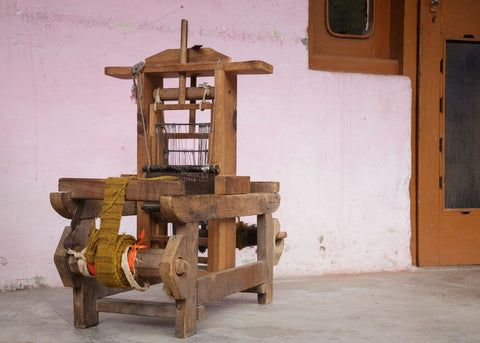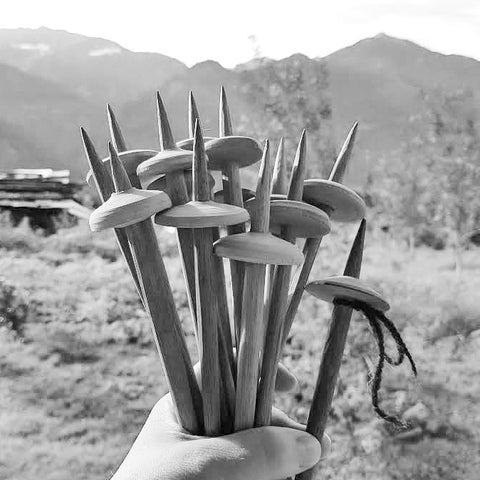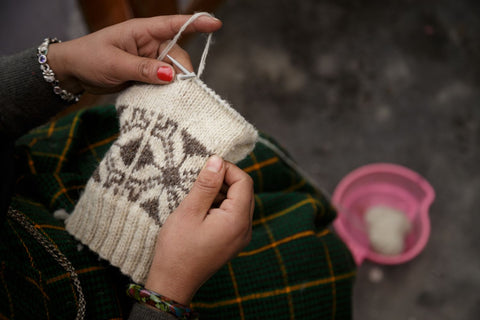Craft Traditions

Regionally Specific Craft Techniques
The warmth and protection that natural wool fabric provides has always been a necessity for fending off the snowy winter cold and the rain-drenched monsoon typical of this mountainous region.
Many people still possess the varied skills to make wool textiles by hand. They weave or knit for themselves and for family members, and to a lesser extent, for the local tourist shops, despite there being little demand or support for making these products, or value placed on them in the local markets.
Handweaving
Spinning and weaving are traditional crafts deeply engrained in the rural Himachali way of life, and are said to have been practiced for at least 5000 years.
Most traditional homes have a large racch frame loom set outside on the verandah for weaving in the late morning sun, and the elder generation in particular retain the knowledge to weave their traditional plaid wrap pattu dresses and blankets.

The younger generation are more familiar with the smaller portable khaddi loom, which is used for creating narrow and often complex woven borders for shawls and the iconic topi hats.

Handspinning
Spinning is the process of turning raw fibre into yarn.
In Himachal Pradesh, spinning is often a late morning activity, done after household tasks are complete, or in front of the warm tandoor oven on winter evenings.
Each region in India is home to a unique traditional spindle, made from metal or wood, and designed to be used to create yarn with indigenous and regionally specific natural fibres such as wool, silk or cotton.

Regional Spindles
There are two types of spindles found in the Kullu Valley where the women of Kullvi WHIMS live.
- the takhli, a bottom whorl supported spindle, spun directly on the ground

- the masayan, a larger bottom whorl drop spindle, with a spiral carved into the top, used while standing for plying two strands of yarn together.

Both types of spindles are made by local carpenters from local wood.
Handknitting
Knitting is a newer craft tradition in Himachal Pradesh, having arrived with European missionaries in the 1850s.
Characteristic regional designs and motifs have developed over time. Lahauli socks, for example, feature beautiful recognizable motifs and incorporate structural design elements that make them both unique and functional.
The level of skill and dexterity amongst Himachali knitters is incredible. It's not unusual to see someone walking, with something hoisted on their back and knitting something complex at lightning speed. Sweaters, vests and cardigans are popular to knit, and can be seen on just about everyone around town.

Since the 50's and 60's, people switched from using local wool to knitting these garments with the synthetic yarns that are readily available in the local markets.
The collaboration between Rani & Reine and Kullvi WHIMS aims to bolster the rebuilding of rural networks between the local shepherd communities and the village artisans in the Kullu Valley, putting local indigenous wool back in the spotlight, and building a thriving natural fibre and craft economy.
